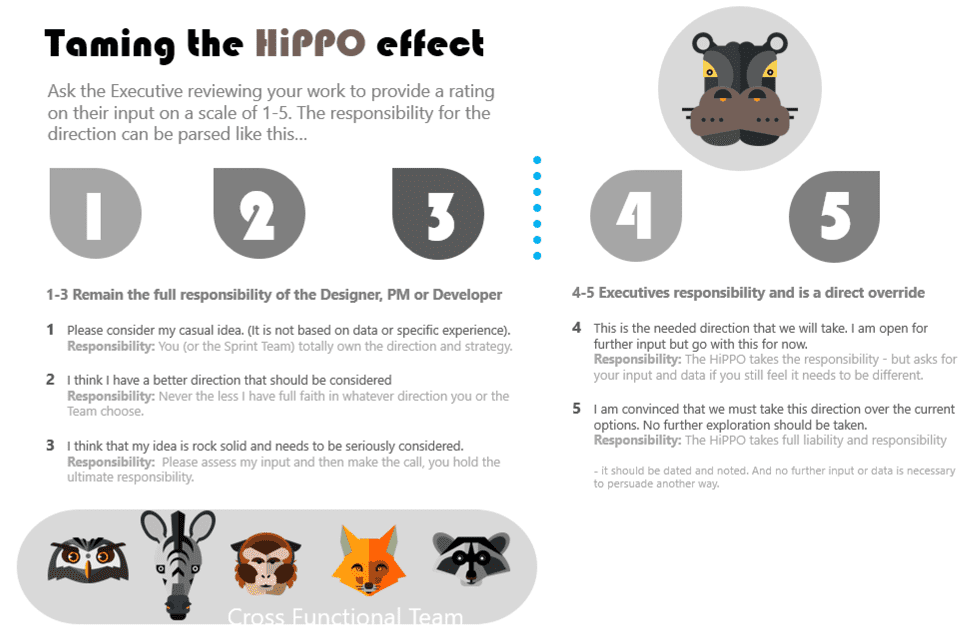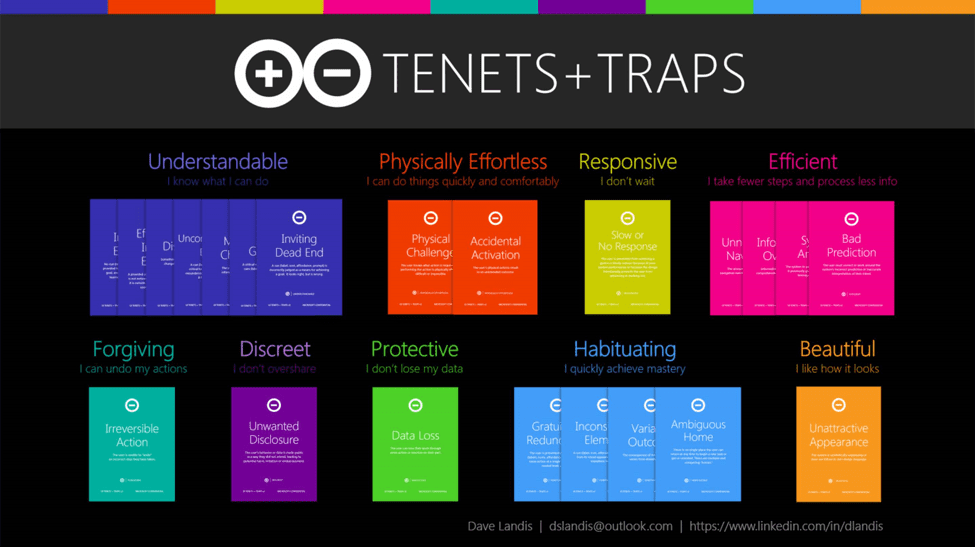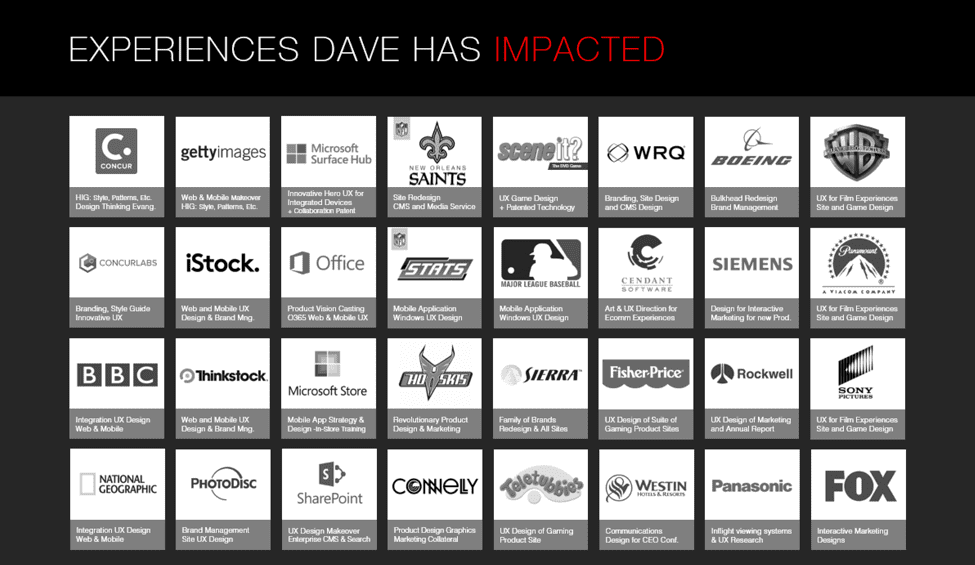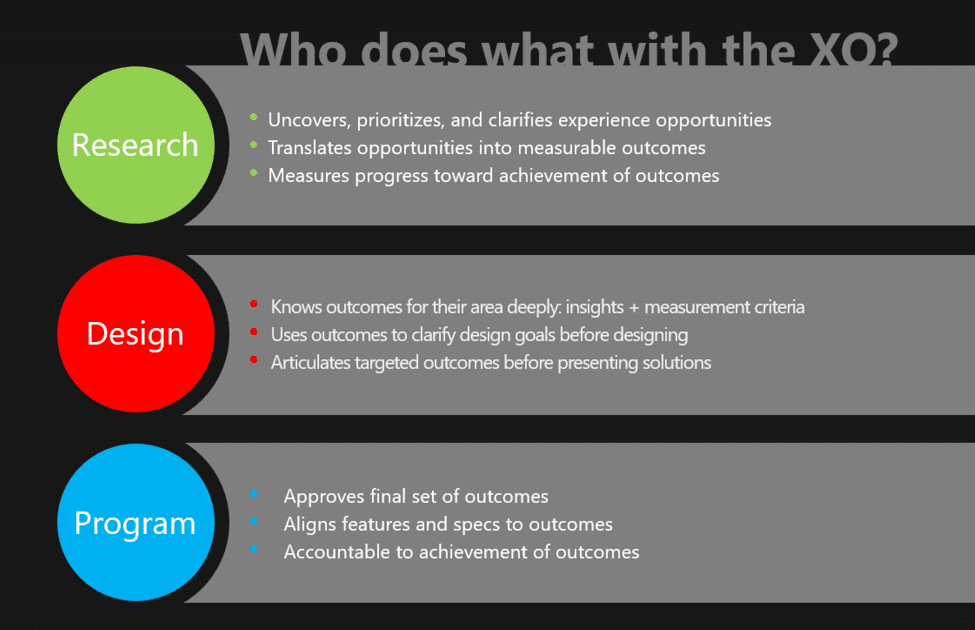Guest post interview with Dave Landis
Part 1__________________________________________________________________
 Tell us a little about yourself, your background and what motivated you to enter the field of user experience design.
Tell us a little about yourself, your background and what motivated you to enter the field of user experience design.
I have been having way too much fun creating experiences where people need and enjoy using technology in their lives…
From Psychology, to Digital Marketing and building brand dominance for fortune 500 companies, to Experience Focused Engineering for global enterprise software. And creating never been done before entertainment games like SceneIt, to Marketing tools that leverage AI and Machine learning to the next level. I have always been on the forefront of creating and leveraging the latest technologies to be optimized and engaging for people.
I have been blending Emotional Driven Design, Data Supported Design, Experience Outcome (XO) Design, Intuitive Design and now I am learning to master Machine Learning Inspired UX, all for the perfect mix of HCD (Human Centered Design). I am a true generalist with a balanced focus on IA, UI, Branded Experiences and UX Research. (IA – Interaction Architecture, UI – User Interface Design, UX – User Experience).
I suffer from a deep heart passion for empathically understanding the soul of humans as they seek to get the most from technology. I have a love for bringing Design Thinking into all I do, and an obsession with defining the future by inventing it. These motivations poured me into a wide variety of solutions for the entertainment, B2B, B2C and non-profit spheres of the products, services, and experiences. (B2B – Business to Business, B2C – Business to Consumer).
What are some of the unique methods you value in your design process?
I am not sure how “unique” my methods are in and of themselves, but rather I have discovered that my uniqueness is in their application. I have discovered a few things that seem to have significant impact in the success my Experience Focused Engineering processes.
On taming the HiPPO Effect:
I have found a curious phenomenon in each company that I have worked. The misunderstood HiPPO Effect. I say “misunderstood” because so often the Highest Paid Person or Executive comes into a room and reviews the team’s direction and states their opinion. The consistent problem is that any hint of an opinion from the exec is viewed as a  mandate that must be carried out. The HiPPO may have only been making a care-free suggestion. I created this simple scale of 1-5 Sphere of Responsibility tool for my cross-functional teams to use to resolve this effect. I ask all my teams to take the HiPPO through this decision filter. Ask the Executive to provide a rating to their input on a 1-5 scale. The responsibility for the direction can be parsed like this…
mandate that must be carried out. The HiPPO may have only been making a care-free suggestion. I created this simple scale of 1-5 Sphere of Responsibility tool for my cross-functional teams to use to resolve this effect. I ask all my teams to take the HiPPO through this decision filter. Ask the Executive to provide a rating to their input on a 1-5 scale. The responsibility for the direction can be parsed like this…
I have personally experienced this approach being successful and revealing multiple misunderstandings every time we use it.
UX Score boarding with Tenets + Traps:
A team of freaky brilliant UX Researchers from my Microsoft engineering days put together this synthesis of all the best practiced books on UX Design. The synthesis generated a deck of cards that we used to “score-card” our UX Designs with. Because no one is thinking this comprehensive in a “Design Review” this tool was invaluable. It forced us to take a detailed lens through the experiences we had designed and ask if they met the criteria for being UNDERSTANDABLE – where the person knew what to do, or PHYSICALLY EFFORTLESS – where they are able to do the thing quickly and comfortably, or RESPONSIVE – where the user doesn’t have to wait, or EFFICIENT – where the user takes fewer steps and must process less information, etc. 
Invest the time to know your XO’s (Experience Outcomes).
This is where once we have the primary user’s journey through the experience they are doing with the technology, we pin point each Experience Outcome that supports the users need and expectation. Parallel to the use of Business Outcomes.
An Experience Outcome (XO) – is simply defining what “job” the software is needing to do for the user. Breaking these jobs down into specific measurable objectives or outcomes allows you to focus in on the micro experiences that bring value to the experience being delivered.
Good XO’s are:
- Customer benefit statements, free of references to products, features, or technologies
- Supported by evidence that they matter to customers
- Scoped to a level that engineering can act upon
Examples of Experience Outcomes
The Job How well it is done
Find an image… …more quickly than you can with current solutions.
Procure image… …with less effort than you can with current solutions
Present images… …with more control than you have with current solutions
You mentioned having a background in psychology – how do you think that’s played a part in the way you approach UX now?
The most valuable thing a UX Designer brings to the table is understanding the end user of the product/service better and deeper than any other cross-functional role on the team.
How does one truly understand the user unless you are an EMPATH, and can take off your own skin, and perceptions and prejudices and step solidly into another’s shoes. Feel what they feel, know what they wish for, what pains them, what motivates them – what truly moves their heart to crave your product or service? Once you have achieve this level of EQ (Emotional Quotient) of connecting with the end-user you will have earned the right to drive the design direction of the product/service.
Just how does one become an “empath” or become deeply skilled in their EQ? The best way I know is to study Psychology, and work with the Mentally Handicapped. Then take them from a broken, destructive state to a healthy whole state. Those same skills will enable you to be a power Human Centered User Experience Designer. – Just sayin.
__________________________________________________
See the original interview on UX Motel and learn more below.


